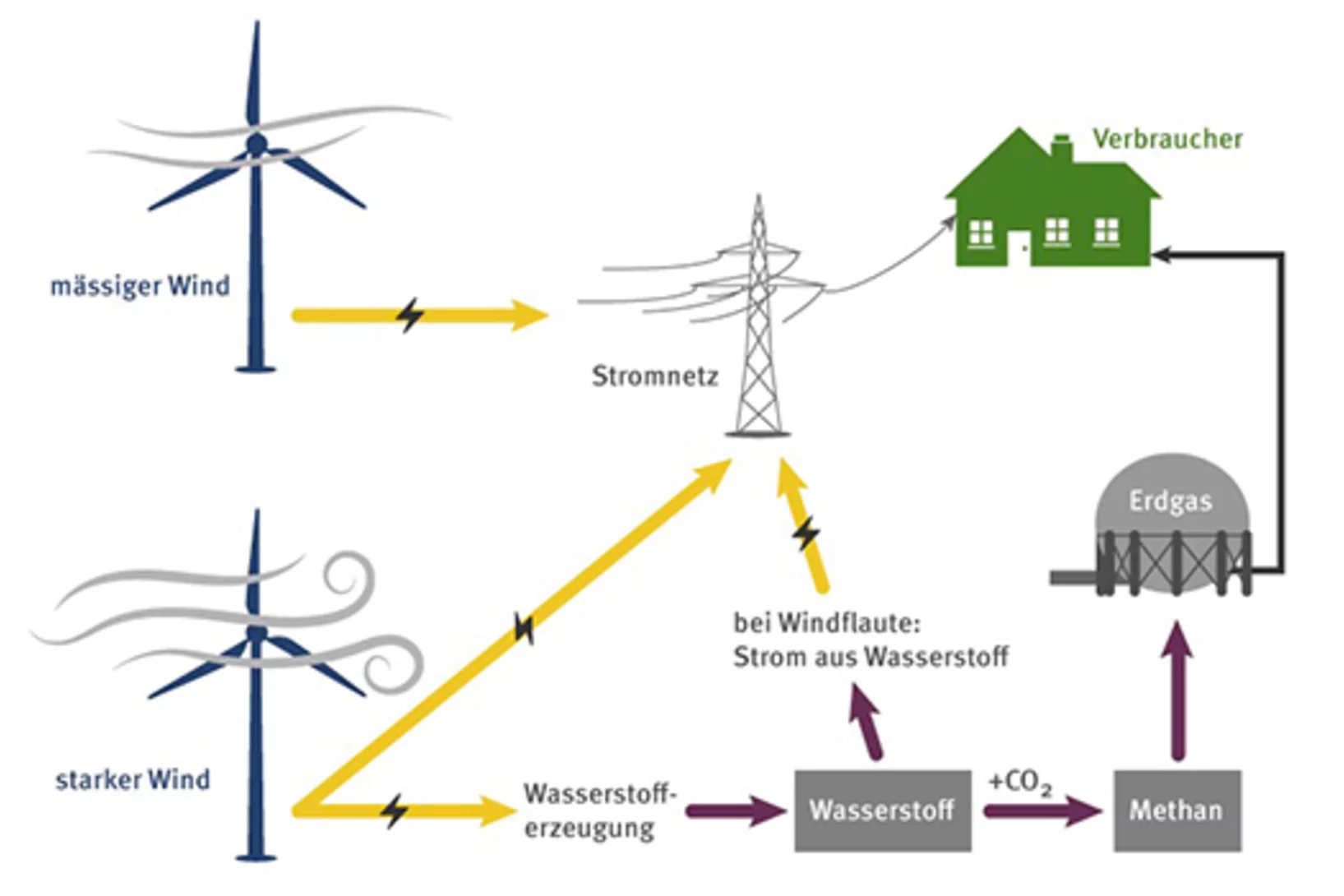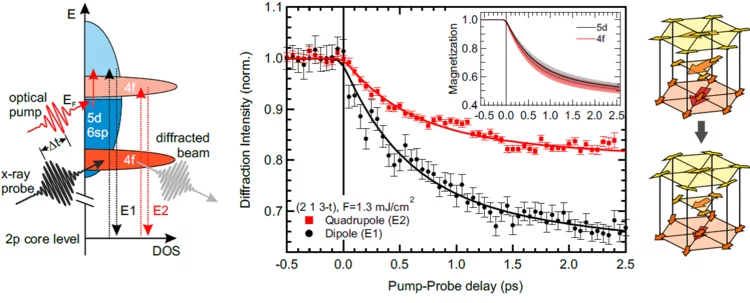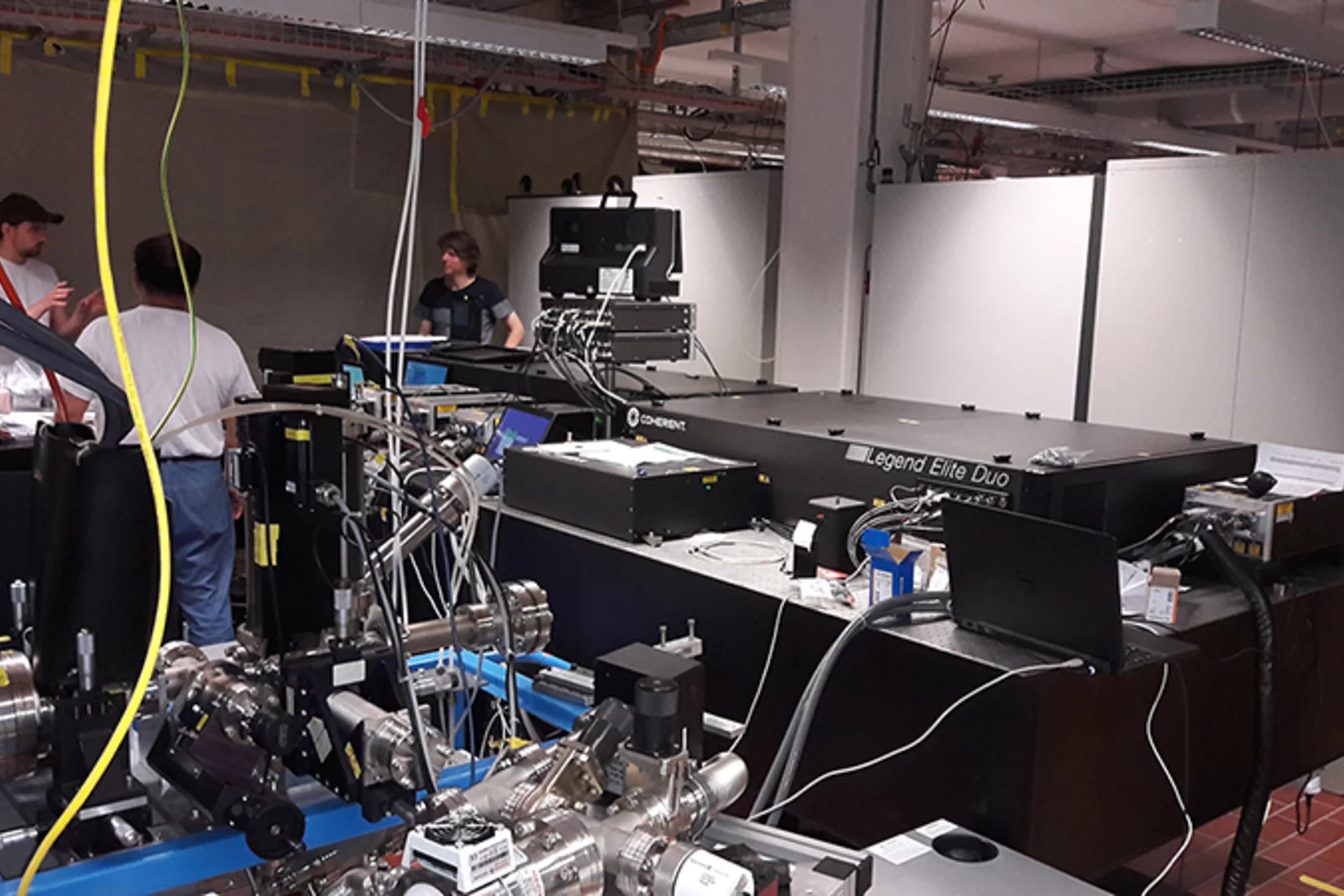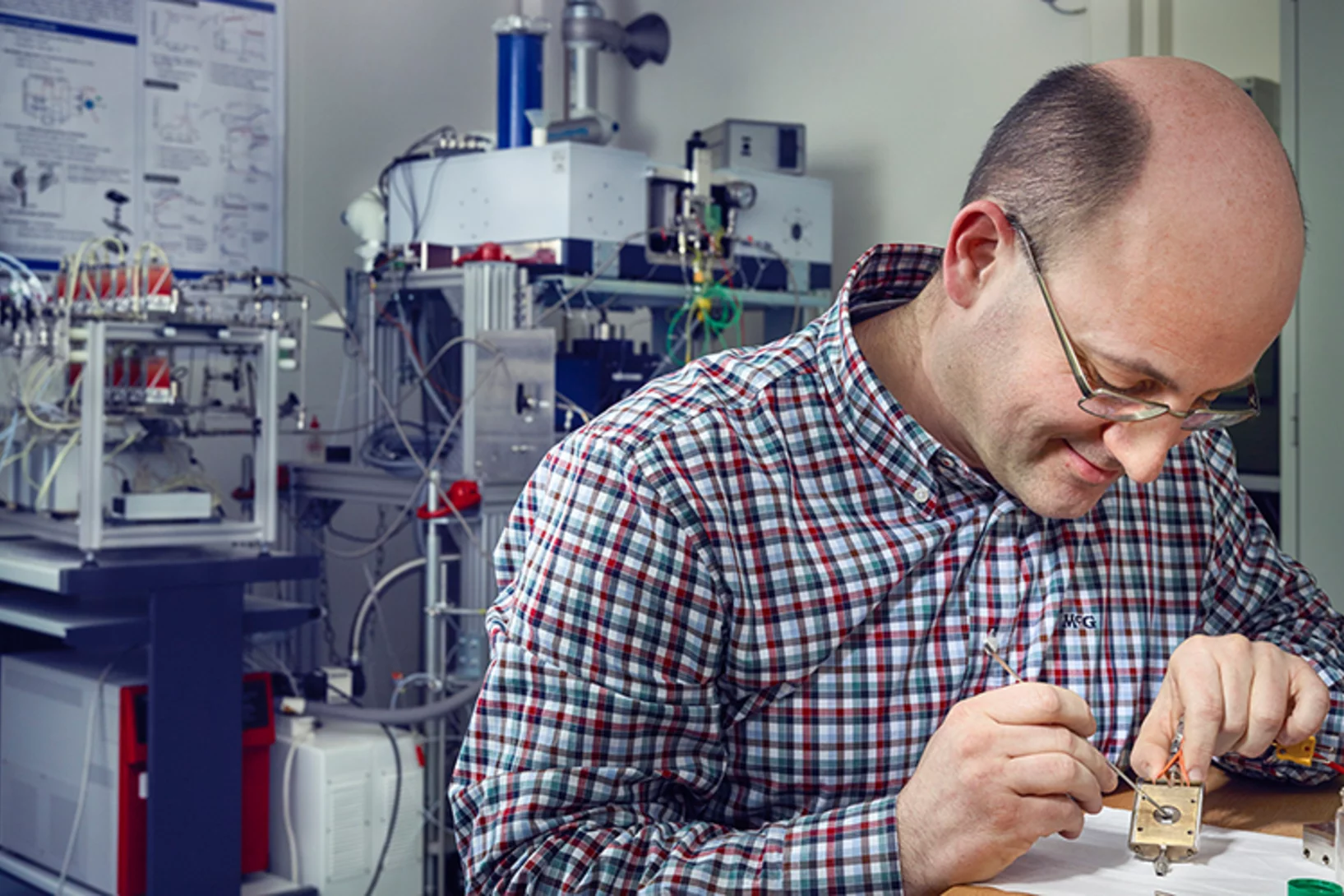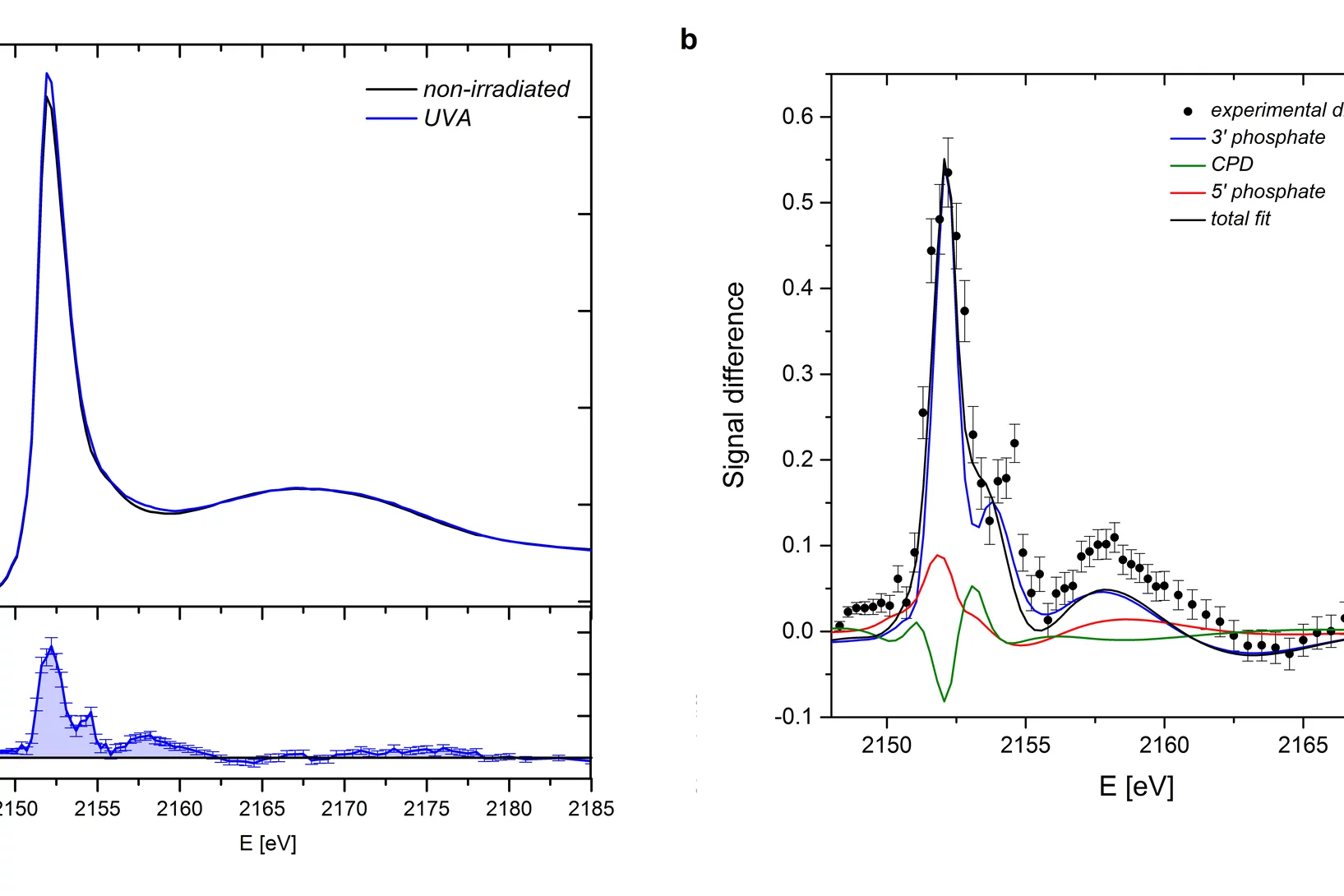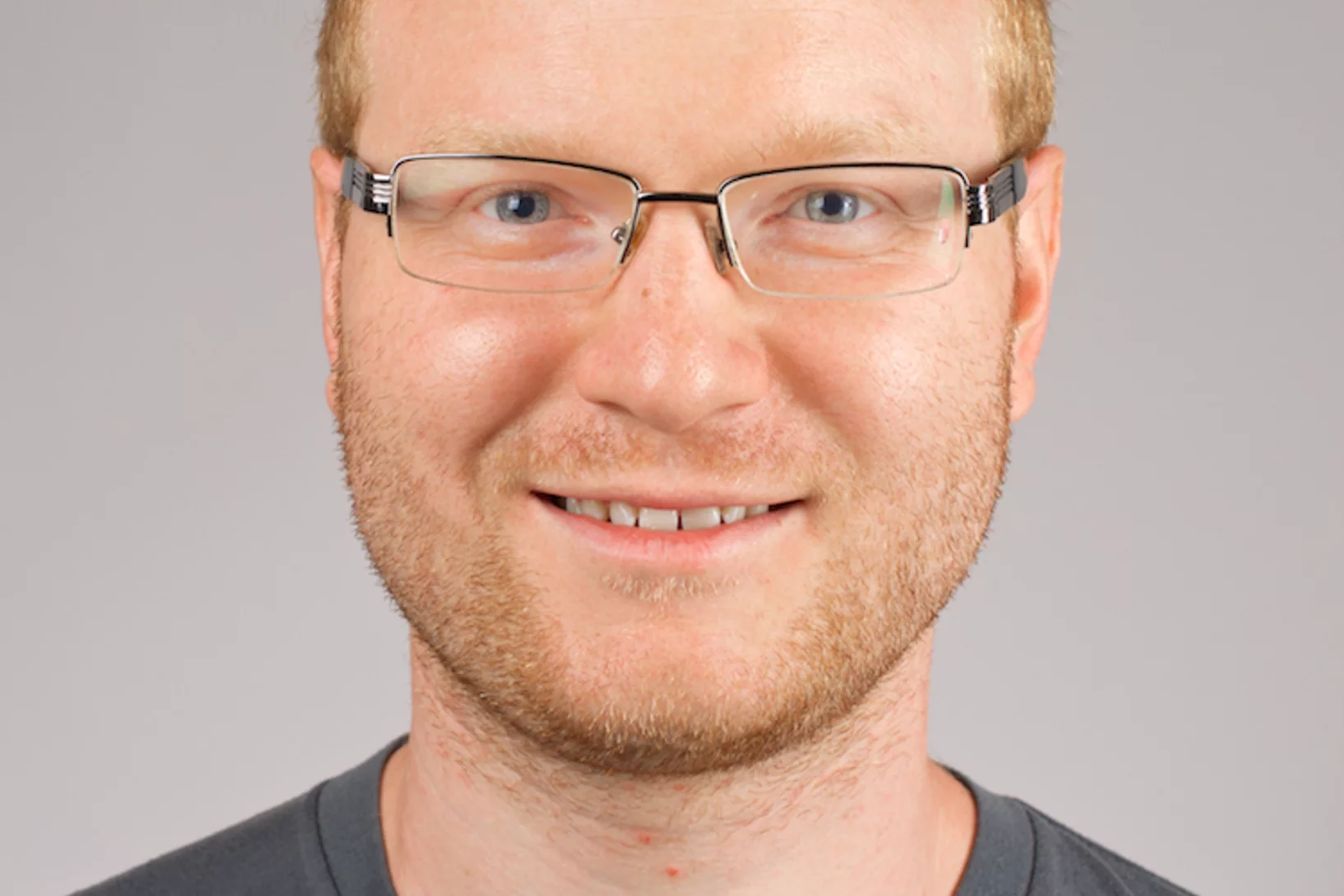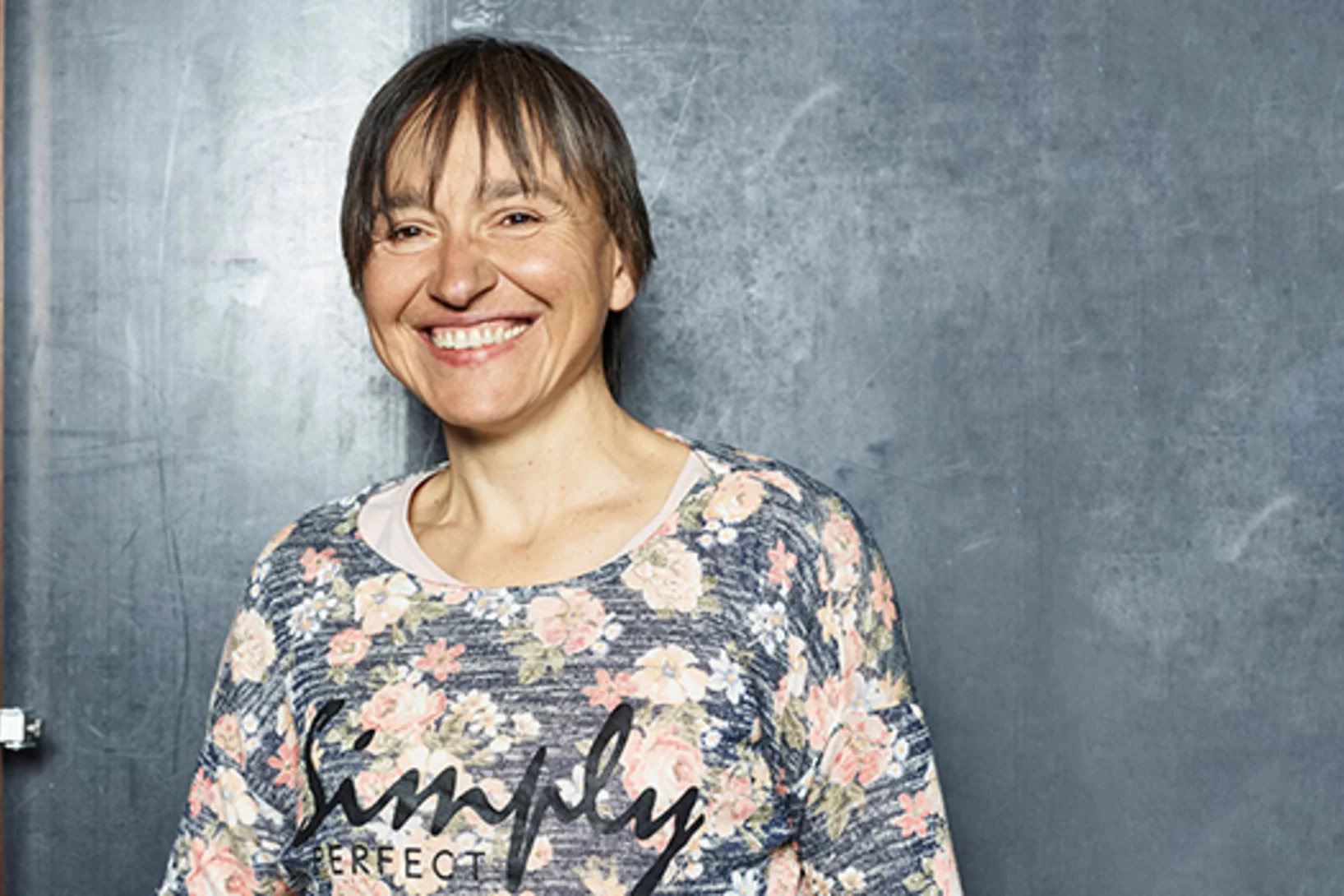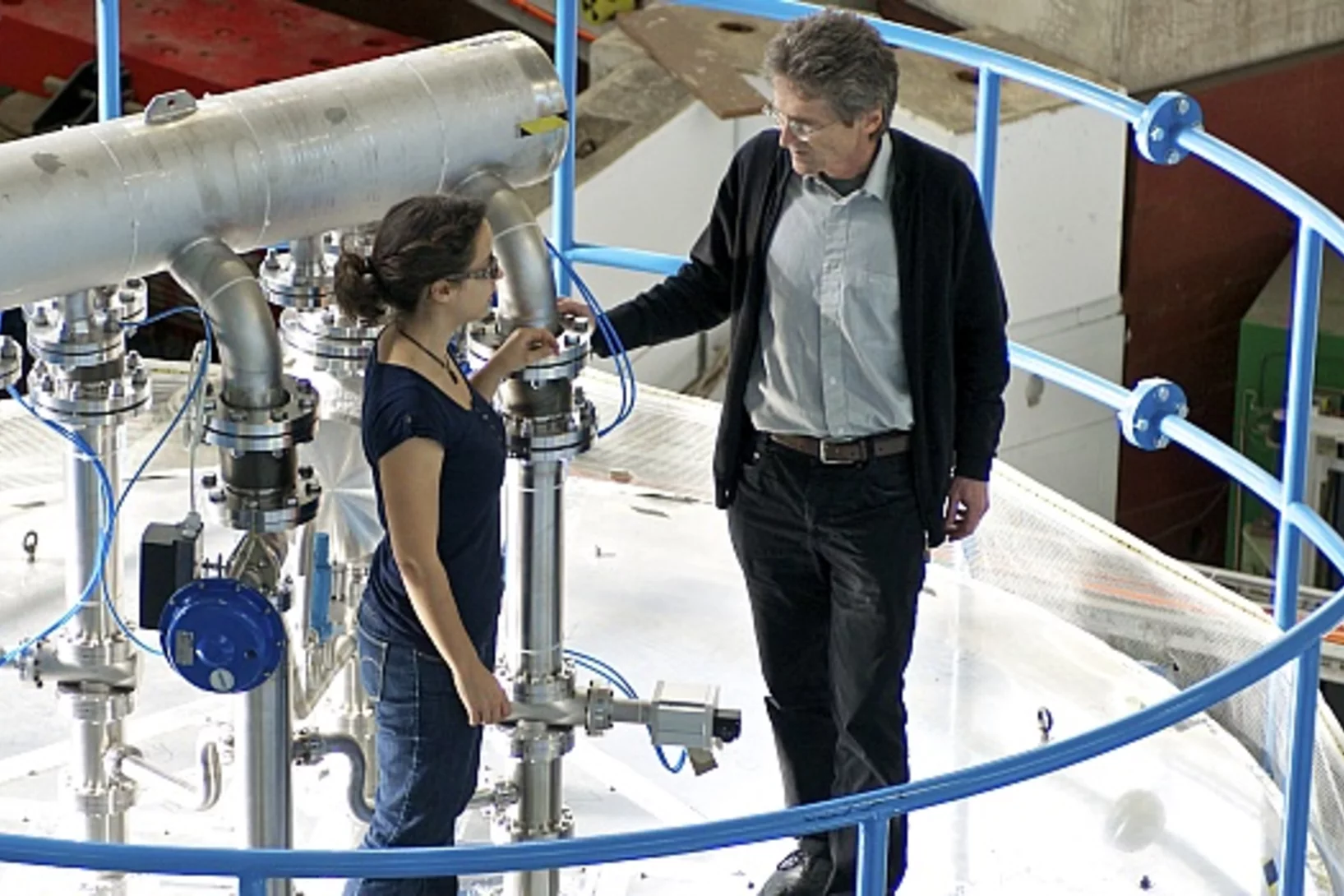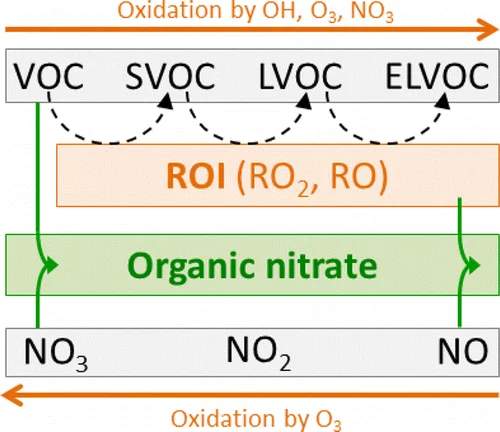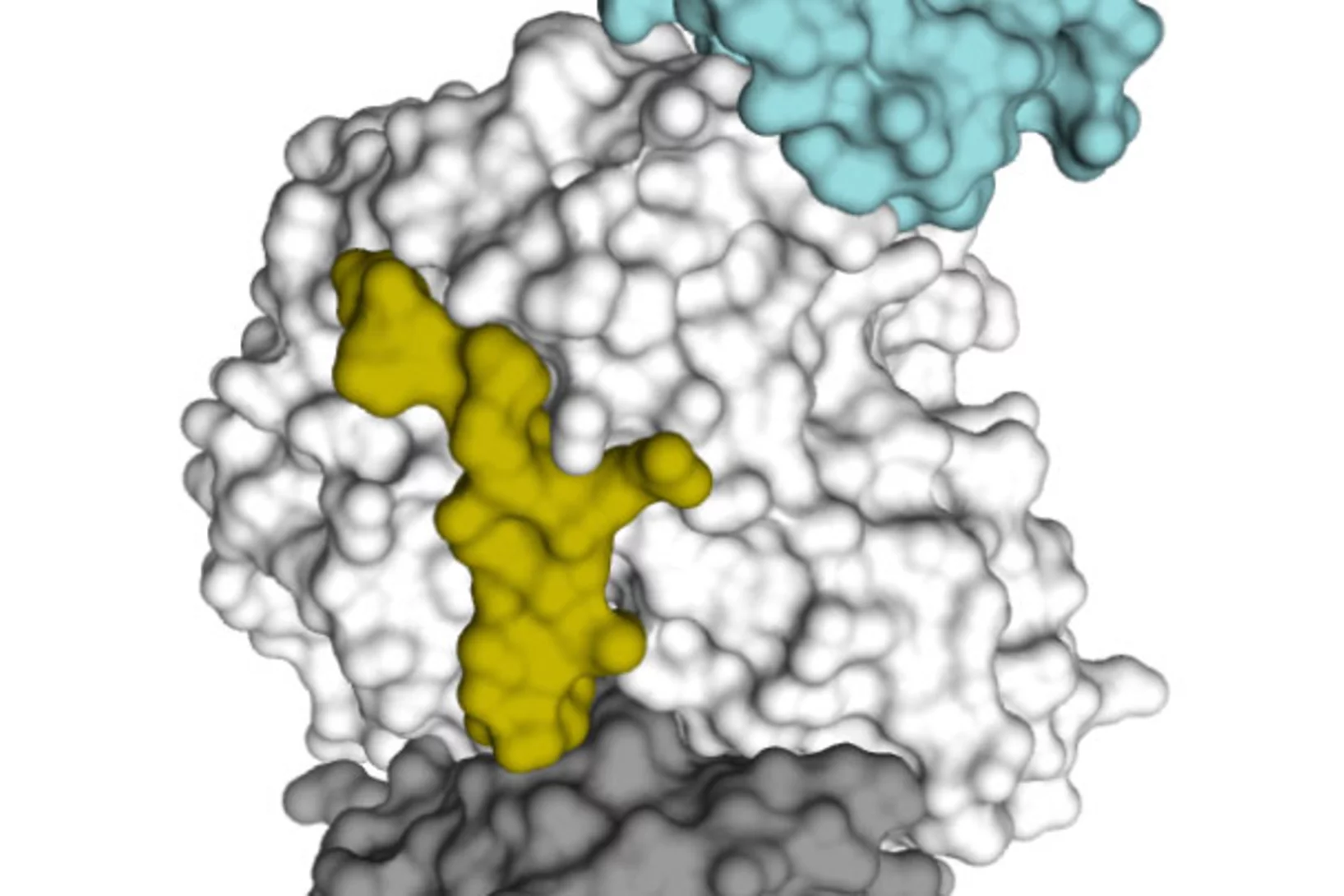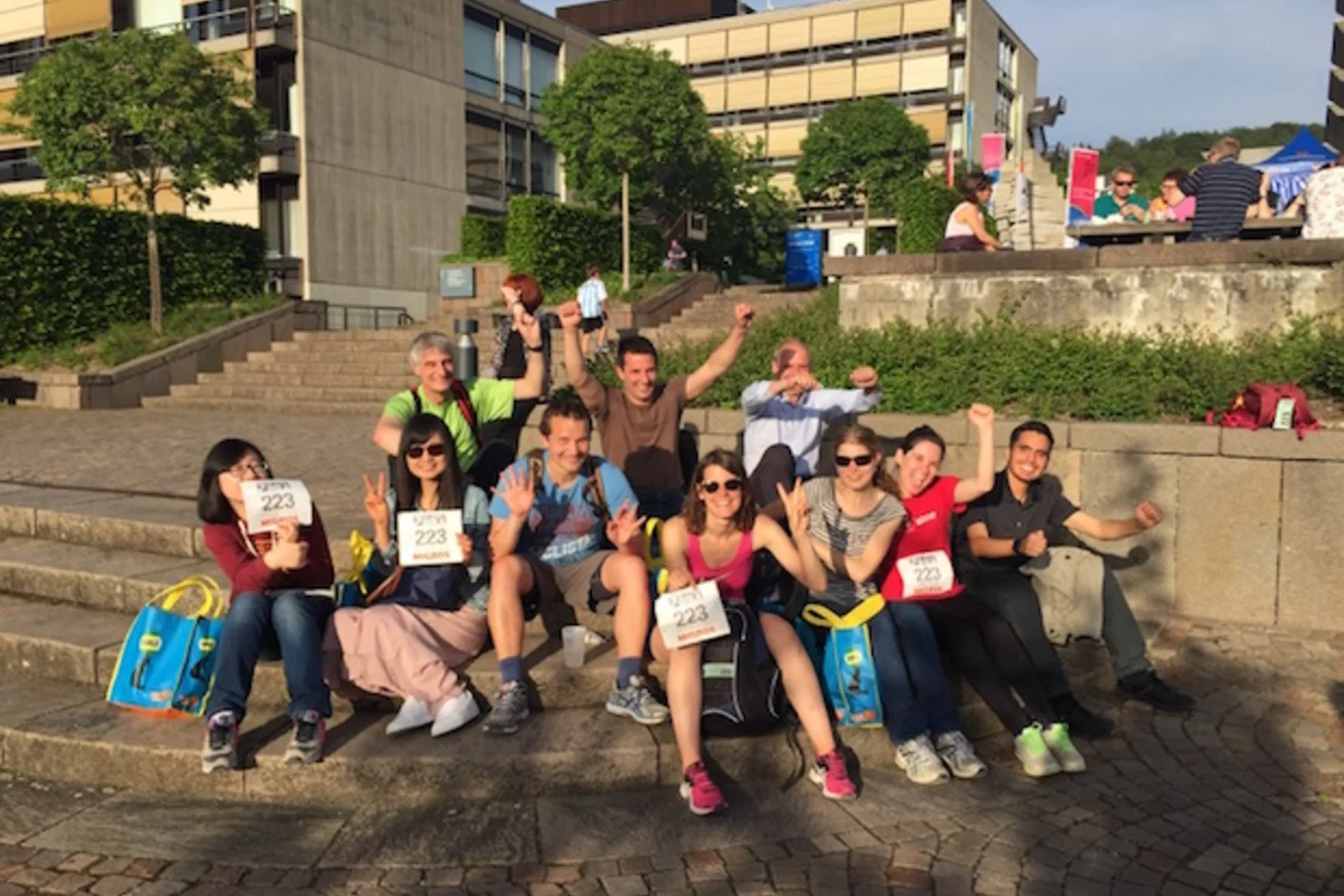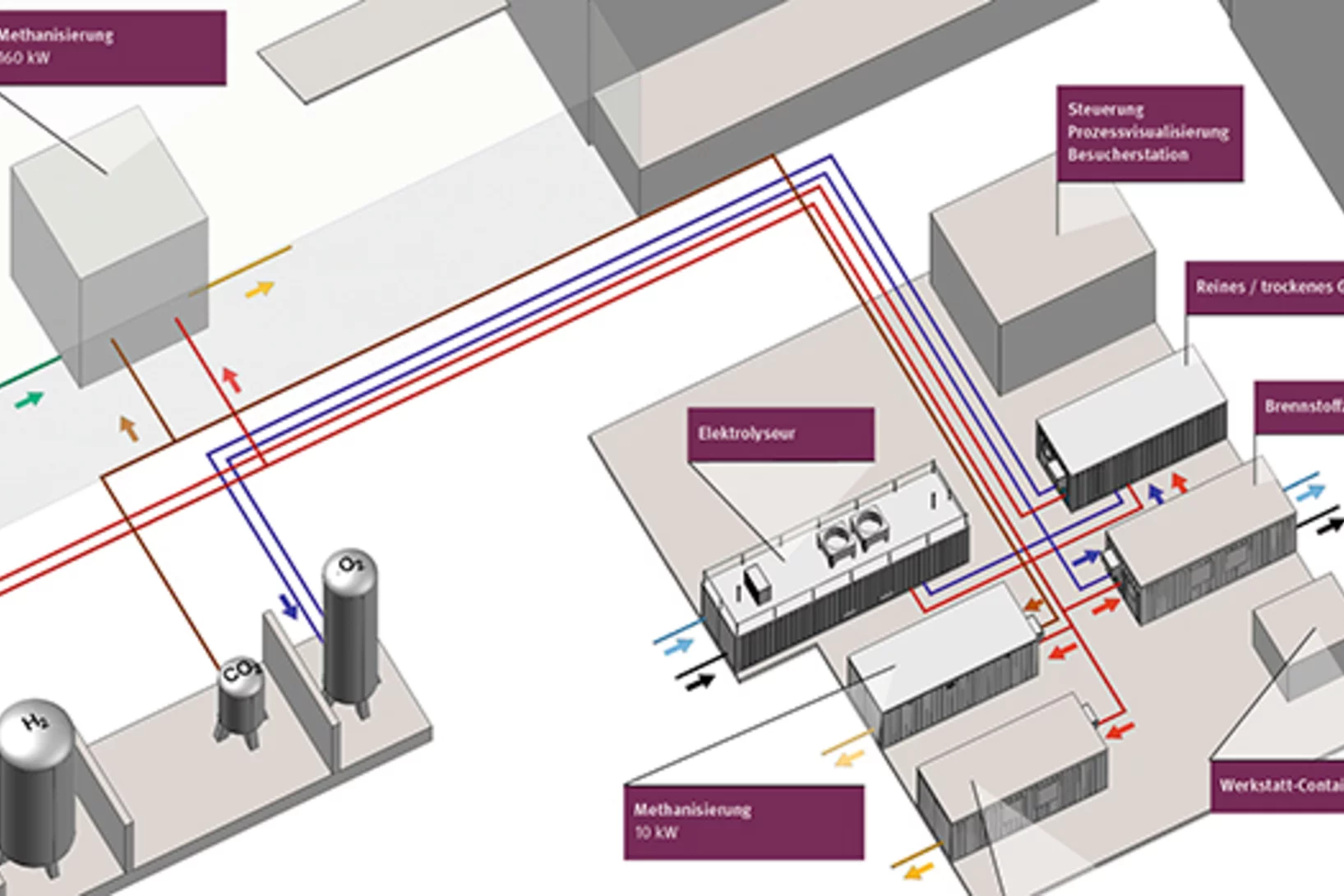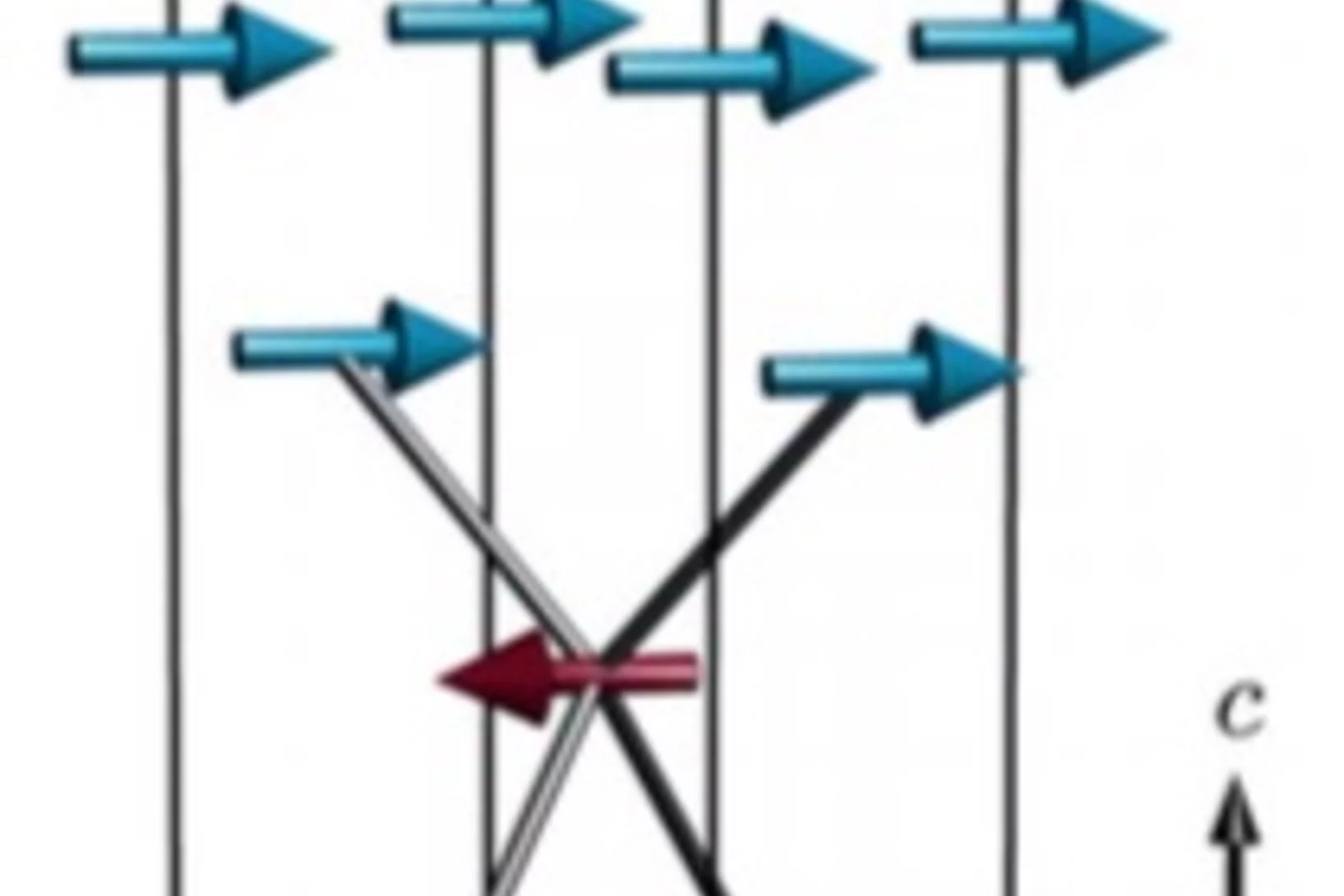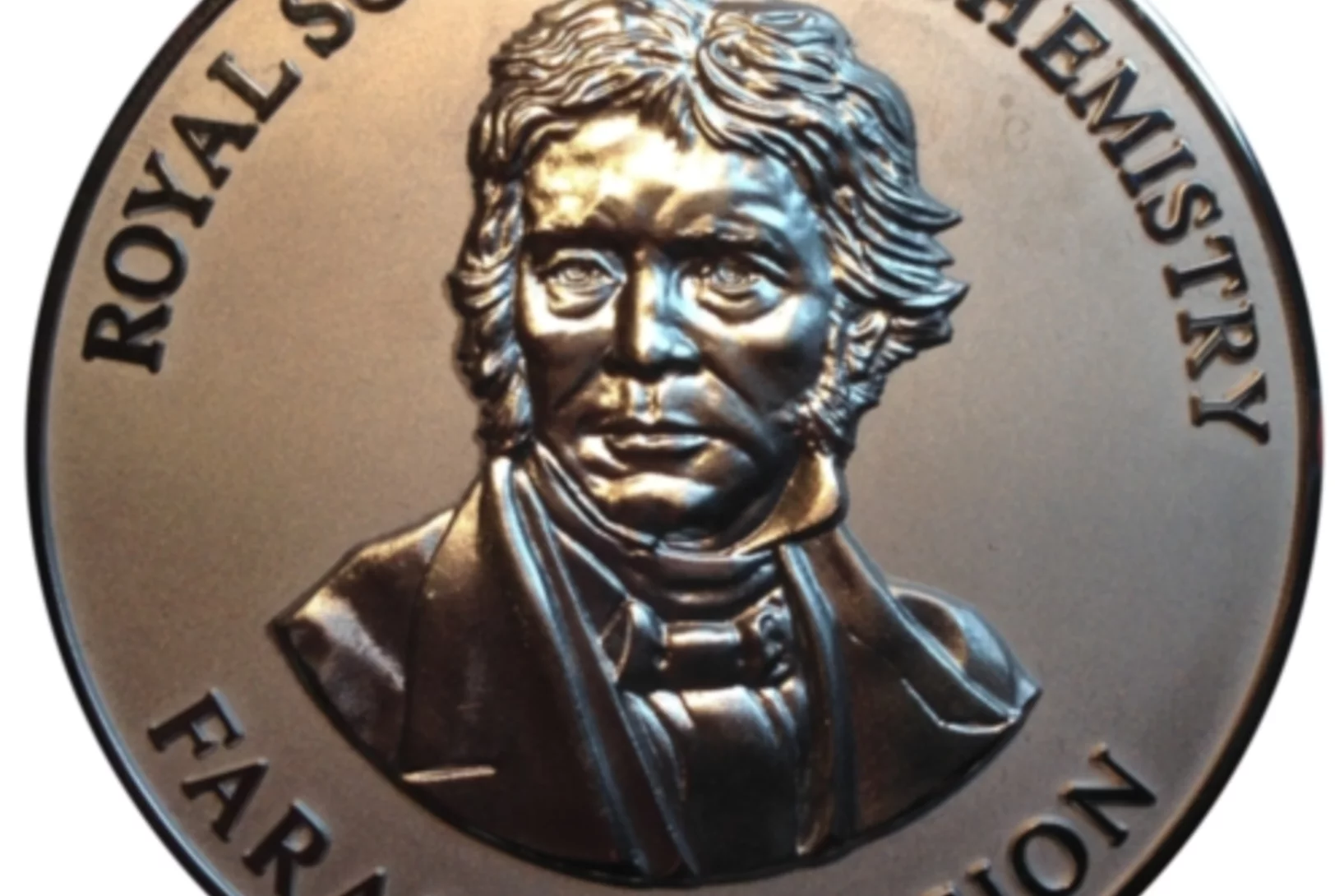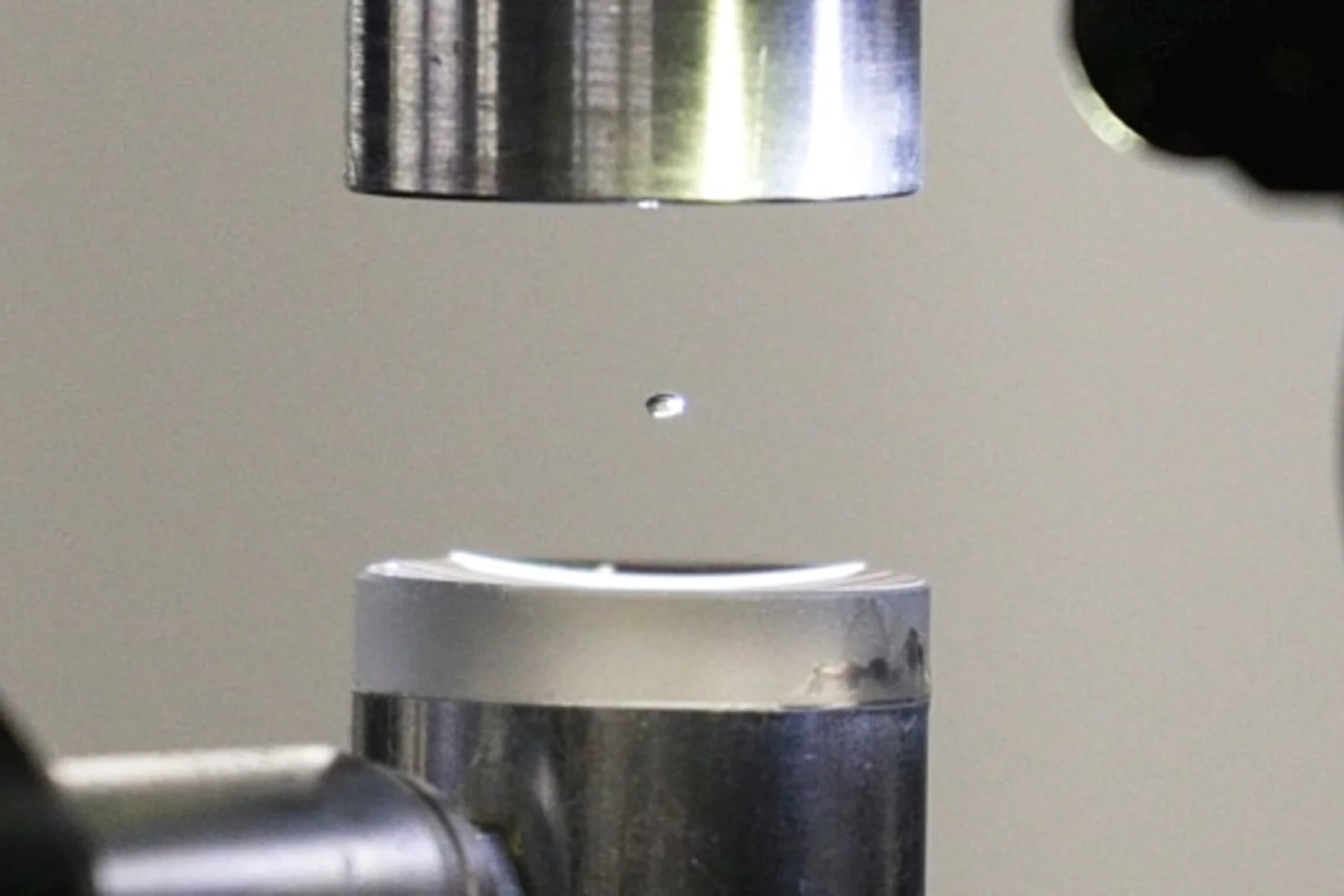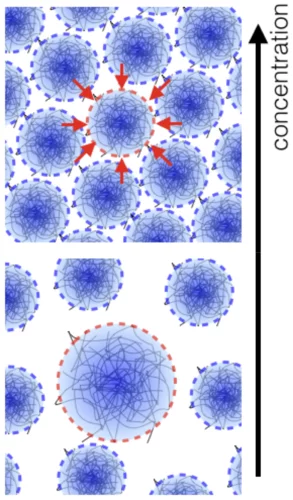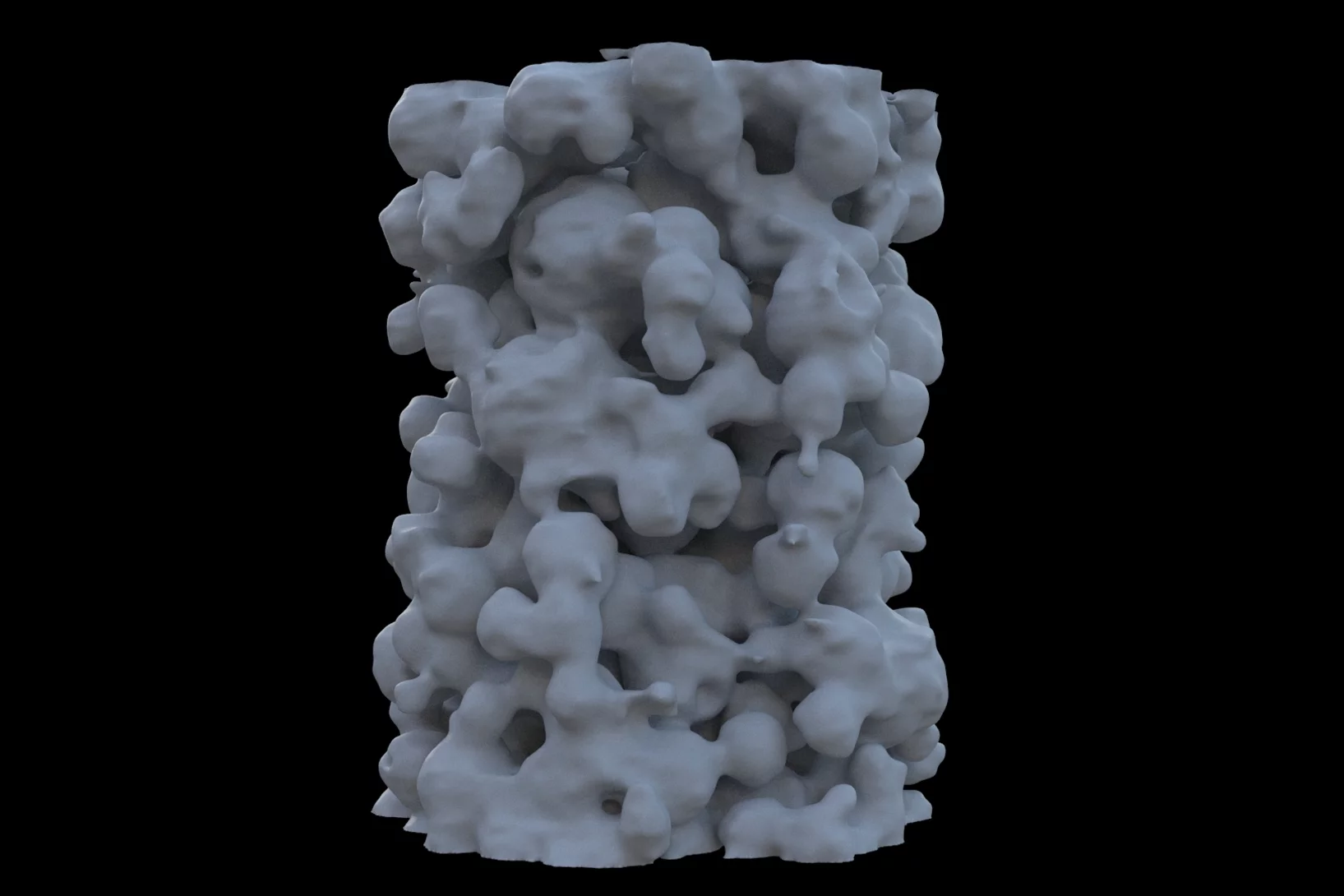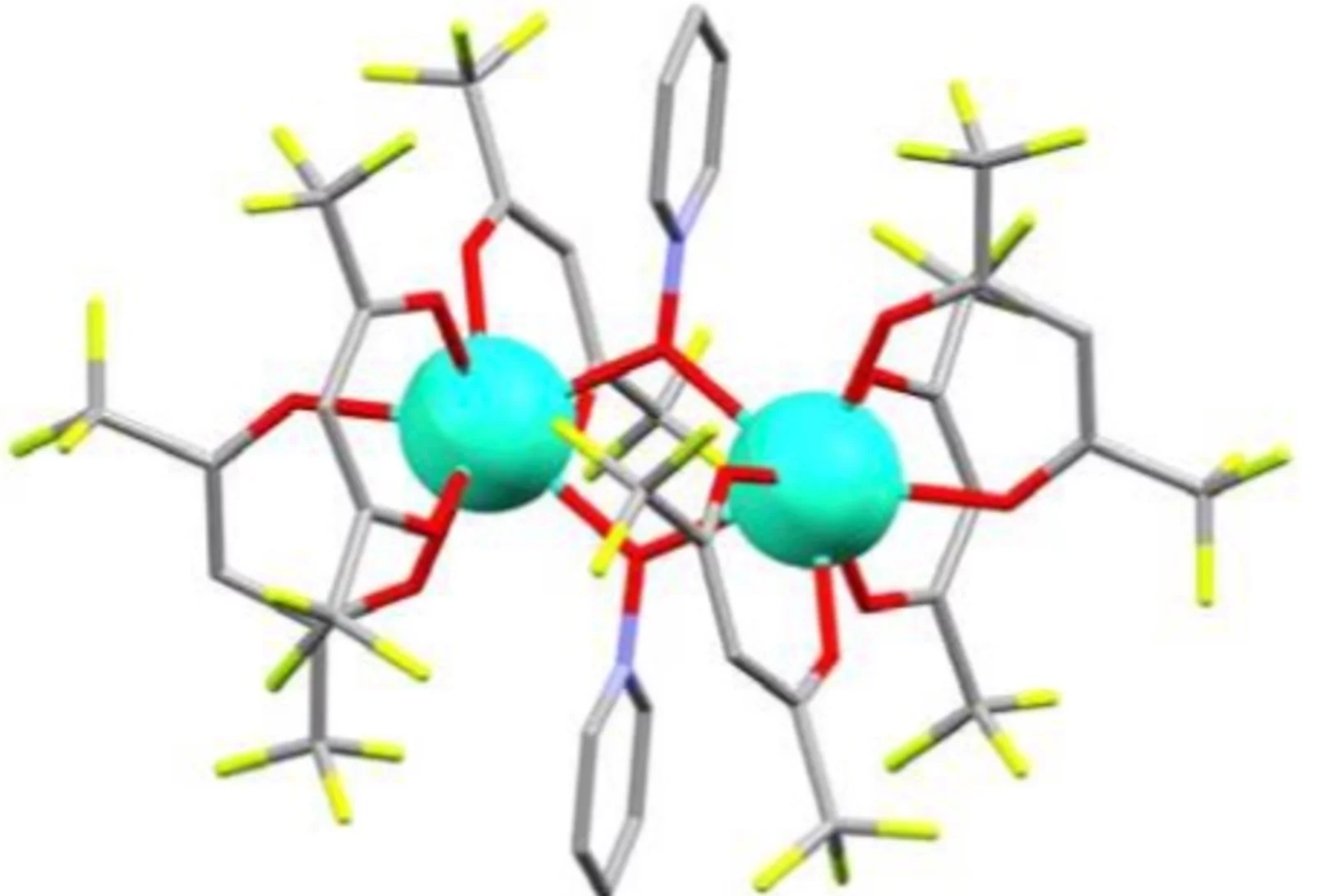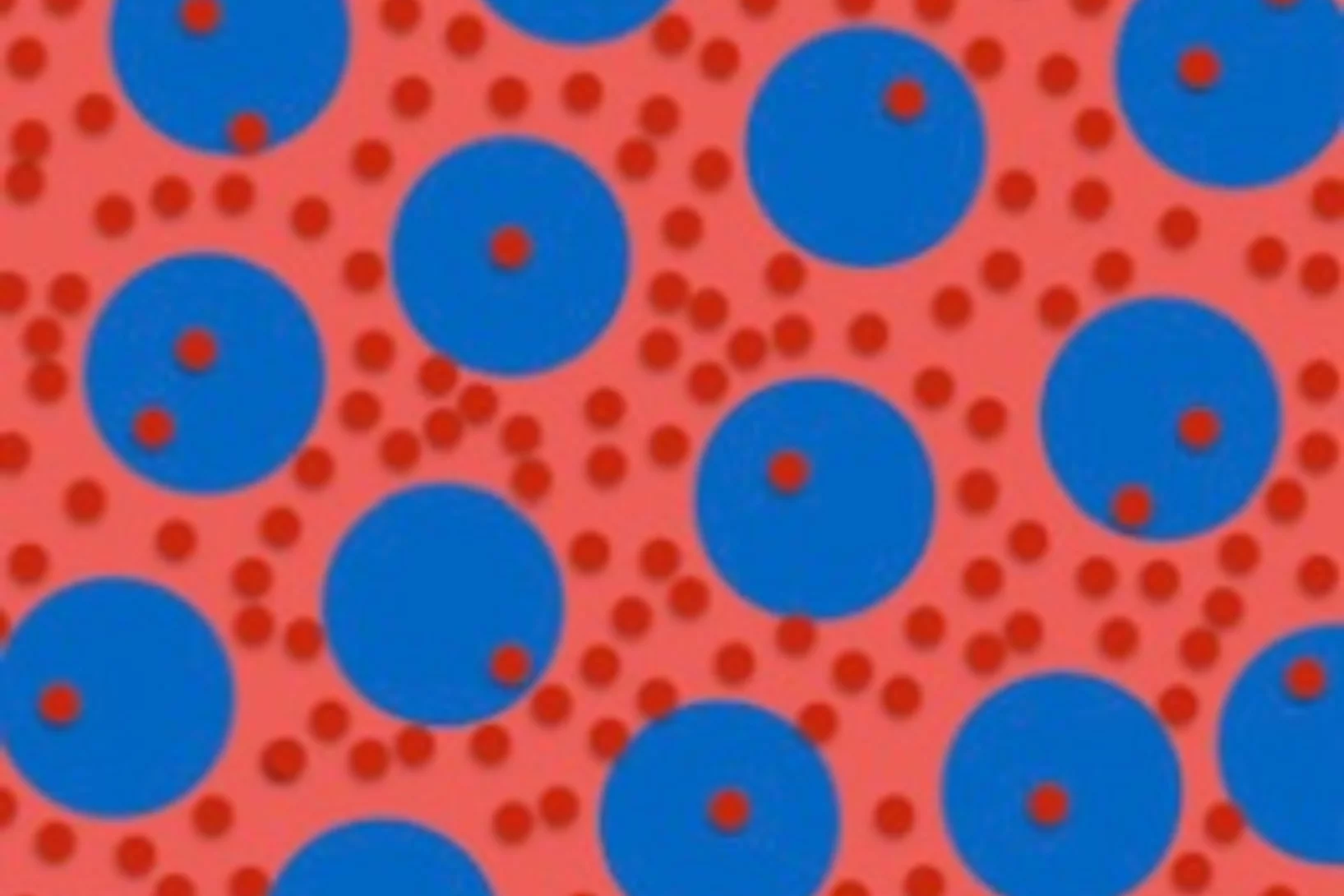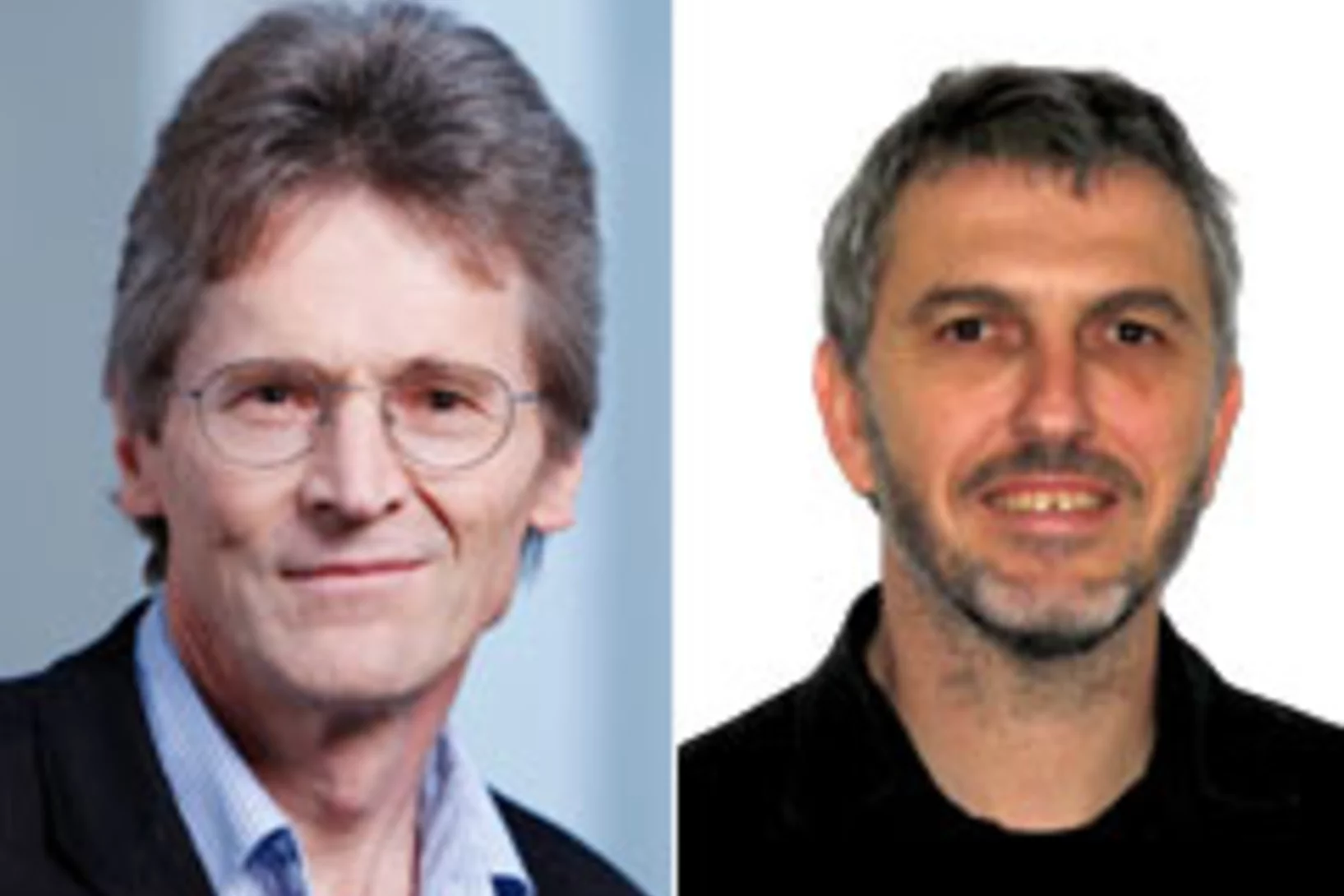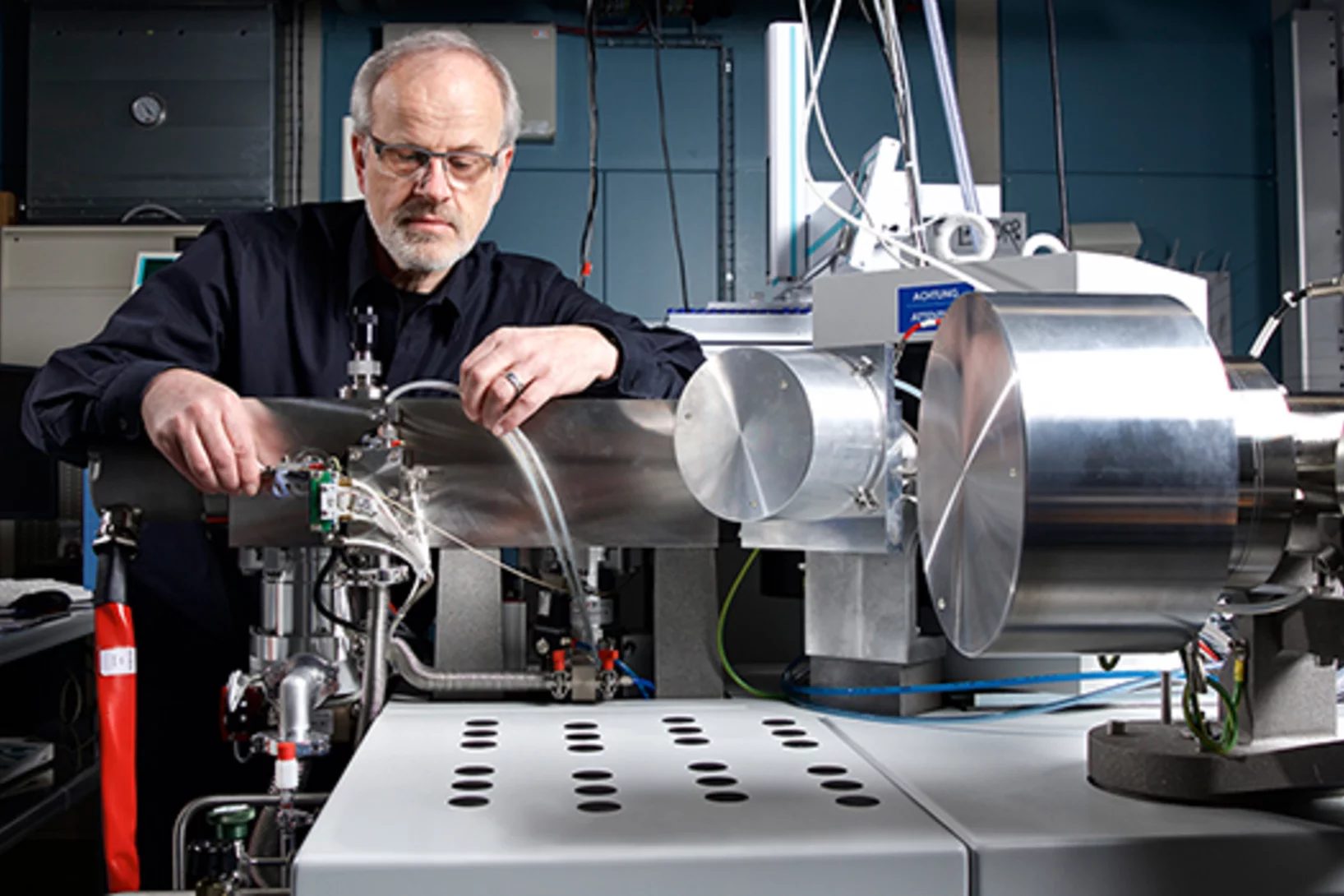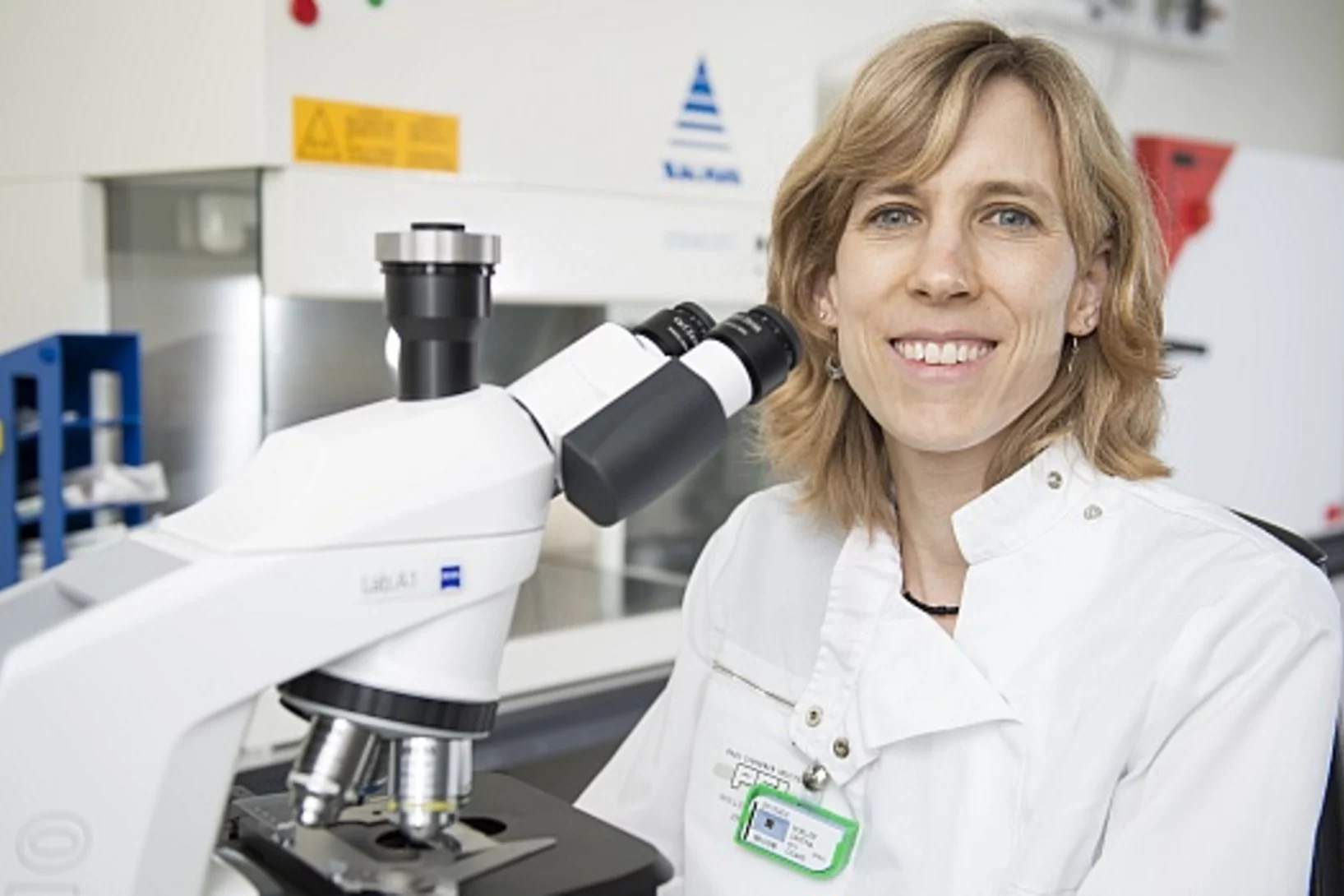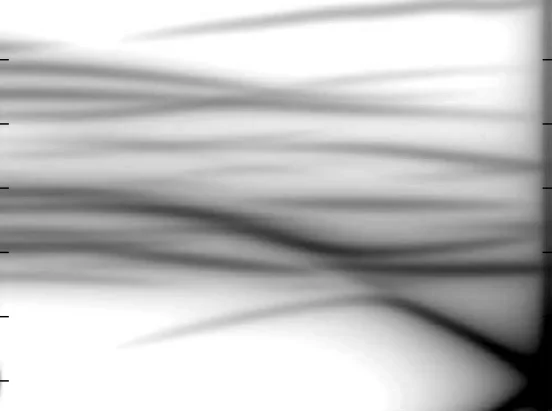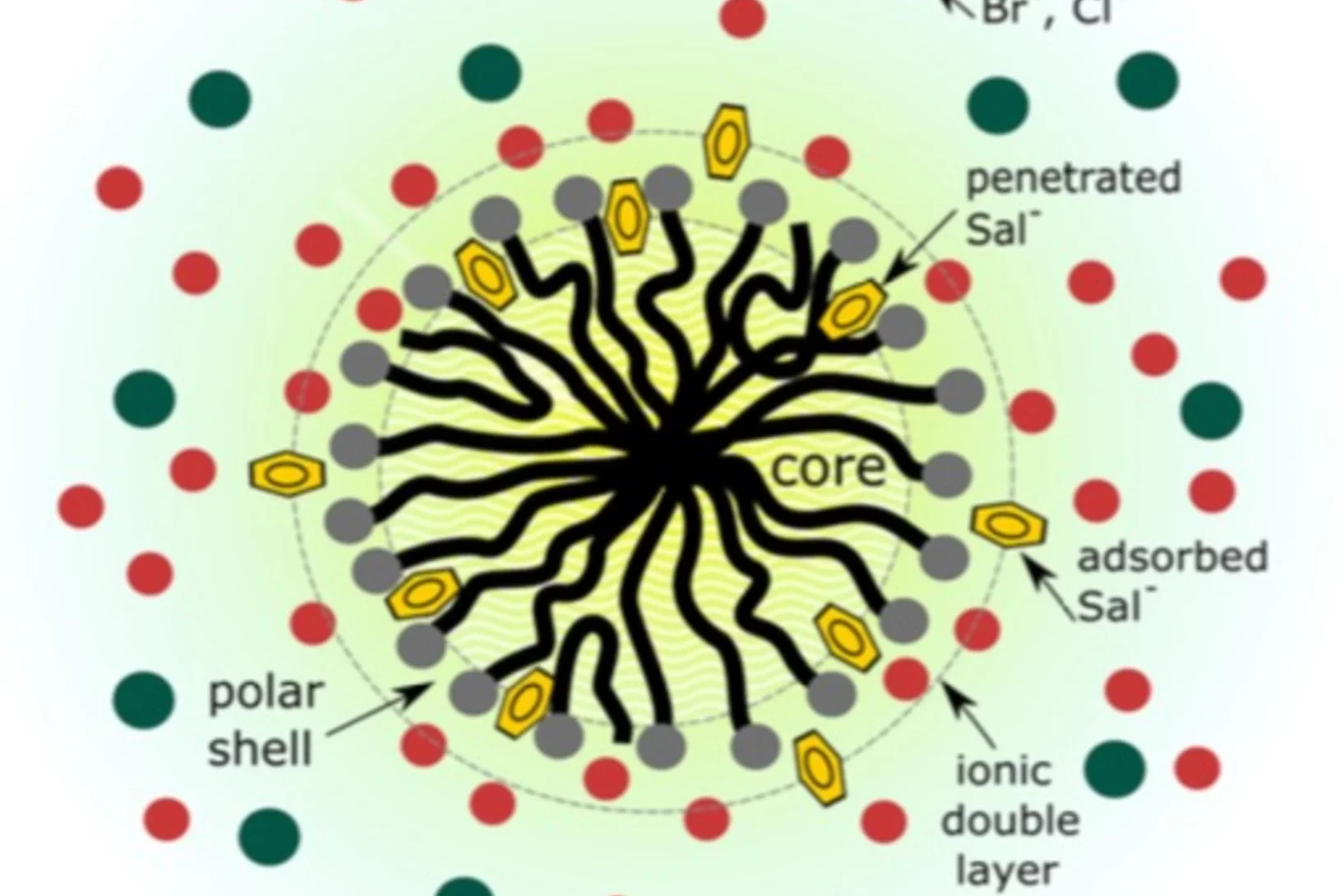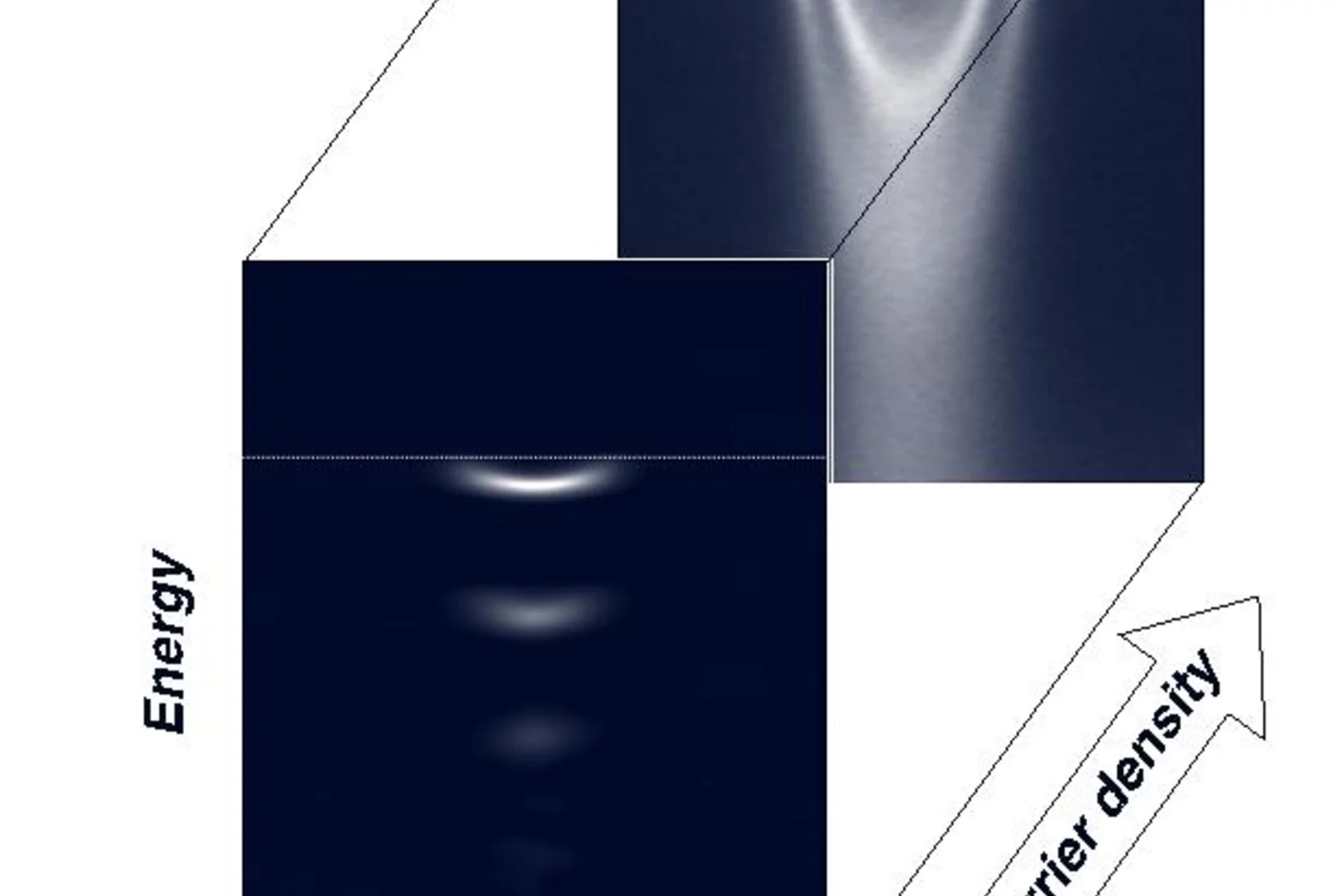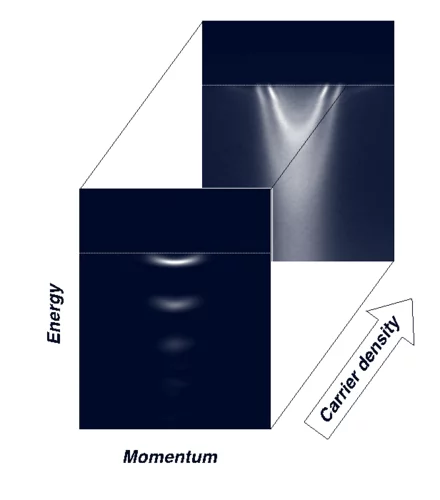Am Paul Scherrer Institut suchen Forschende nach Antworten auf die fundamentale Frage nach den Grundstrukturen der Materie und den fundamentalen Funktionsprinzipien in der Natur. Sie untersuchen Aufbau und Eigenschaften der Elementarteilchen – der kleinsten Bausteine der Materie – oder gehen der Frage nach, wie biologische Moleküle aufgebaut sind und wie sie ihre Funktion erfüllen. Das so gewonnene Wissen öffnet neue Lösungsansätze in Wissenschaft, Medizin oder Technologie.
Mehr dazu unter Überblick Grundlagen der Natur
Den Tumor aushungern
Der PSI-Forscher Kurt Ballmer-Hofer beschäftigt sich mit der Frage, wie man Tumoren „aushungern“ könnte, indem man sie daran hindert, Blutgefässe zu entwickeln. Nach 40 Jahren Forschung, die viele grundsätzliche Erkenntnisse über die Bildung von Blutgefässen gebracht hat, ist das entscheidende Molekül inzwischen gefunden worden; weitere Forschung soll nun neue klinische Anwendungen möglich machen.
Aus Strom wird Gas wird Strom
Mit zunehmendem Ausbau der Photovoltaik- und Windkraftanlagen wird deren Integration in das bestehende Energiesystem zur Herausforderung. Auf der ESI-Plattform wird getestet, wie die Integration gelingen kann. Die Lösung: Überschüssige Energie wird in Form von Gas gespeichert.
Itinerant and Localized Magnetization Dynamics in Antiferromagnetic Holmium
Resonant magnetic scattering performed at the x-ray free electron laser facility LCLS (USA) has been used to investigate the magnetization dynamics of elemental Holmium. It is found that the demagnetization of conduction electrons and localized 4f magnetic moments have the same temporal evolution showing a strong coupling between the different magnetic moments.
First light from the SwissFEL Experimental Laser
The SwissFEL Experimental Laser 1 has successfully been delivered and installed in a temporary laser lab by Coherent, from where it will be moved to SwissFEL by end of 2016. The pre-installation in the temporary laser lab allows to become acquainted with the system, to set up a full monitoring and diagnostics system and to debug potential problems in the next months.
Leistungsfähigere Katalysatoren für Gasautos
Fahrzeuge mit Gasantrieb sind im Kommen, und auch sie brauchen Abgaskatalysatoren. Während die Empa daran arbeitet, Gasmotoren und -katalysatoren zu optimieren, spezialisiert sich das PSI auf Untersuchungsmethoden, mit denen man die Vorgänge im Katalysator sehr genau beobachten kann. Für ihre Arbeiten haben die Forschenden am PSI nun eine universelle Messkammer entwickelt, in der der Katalysator mit verschiedenen Methoden unter immer den gleichen Bedingungen untersucht werden kann.
Ein Atom aufs Mal
Die Forschungsgruppe für superschwere Elemente erforscht am PSI die exotischen, instabilen Atome am Ende des Periodensystems der Elemente. Der Traum: Eines Tages die Insel der Stabilität zu entdecken, die auf der Landkarte der Chemiker jenseits der bislang bekannten Elemente existieren könnte.
Investigating DNA Radiation Damage Using X-Ray Absorption Spectroscopy
The key to achieving more effective radioprotection and radiotherapy is to understand the exact mechanism of the interaction between radiation and biomolecules, and in particular to obtain the precise structure of the different forms of damage and their relative ratios. Among all biomolecules exposed to radiation, DNA plays an important role because any damage to its molecular structure can affect the whole cell and may lead to chromosomal rearrangements resulting in genomic instability or cell death.
Welcome Dr. Peter Alpert
We warmly welcome Dr. Peter Alpert in the Laboratory of Environmental Chemistry joining the Surface Chemistry group as of 1st June 2016. Peter Alpert has received his PhD at Stony Brook University and has been a postdoc at CNRS-IRCELYON in France. Peter Alpert will strengthen the group’s activities in application of Scanning Transmission X-ray Spectromicroscopy (STXM) in a CROSS project with the SYN department (PolLux beamline and Laboratory of Micro- and Nanotechnology) to develop a new generation of environmental cells.
Zebra – ein neues Instrument für das PSI
Interview mit Oksana ZaharkoNeue wissenschaftliche Fragestellungen erfordern immer bessere Experimentieranlagen. PSI-Forscherin Oksana Zaharko berichtet im Interview über die Herausforderungen beim Aufbau eines neuen Instruments für die Forschung mit Neutronen.
Heutige Messungen liefern Einsichten über Wolken in der Vergangenheit
Forschende haben gezeigt, wie sich aus natürlichen Substanzen Feinstaub in der Atmosphäre bilden kann. Die Ergebnisse werden unser Wissen über die Wolken vor Beginn der Industrialisierung verbessern und so zur genaueren Beschreibung der bisherigen und zukünftigen Klimaentwicklung beitragen.
Organic Nitrate Contribution to New Particle Formation and Growth in Secondary Organic Aerosols from α-Pinene Ozonolysis
The chemical kinetics of organic nitrate production during new particle formation and growth of secondary organic aerosols (SOA) were investigated using the short-lived radioactive tracer 13N in flow-reactor studies of α-pinene oxidation with ozone. Direct and quantitative measurements of the nitrogen content indicate that organic nitrates accounted for ∼40% of SOA mass during initial particle formation, decreasing to ∼15% upon particle growth to the accumulation-mode size range (>100 nm). Experiments with OH scavengers and kinetic model results suggest that organic peroxy radicals formed by α-pinene reacting with secondary OH from ozonolysis are key intermediates in the organic nitrate formation process
Centriolar CPAP/SAS-4 Imparts Slow Processive Microtubule Growth
Centrioles are fundamental and evolutionarily conserved microtubule-based organelles whose assembly is characterized by microtubule growth rates that are orders of magnitude slower than those of cytoplasmic microtubules. Here, we bring together crystallographic, biophysical, and reconstitution assays to demonstrate that the human centriolar protein CPAP (SAS-4 in worms and flies) binds and "caps" microtubule plus ends by associating with a site of β-tubulin engaged in longitudinal tubulin-tubulin interactions.
LUCky Sola Team
The Radiowanderer stroke again: A team of 14 runners from the Laboratory of Environmental Chemistry (LUC) and the Laboratory of Radiochemistry (LRC), as well as a number of external friends and supporters, happily and successfully finished the 43rd Sola event in Zürich. The total distance summed up to 116 km and 2580 m in altitude. Congratulations to the runners!
Aufbau der ESI-Plattform
Der Weg in eine nachhaltige Energiezukunft führt über die Integration neuer erneuerbarer Energien aus Sonne, Wind oder Biomasse. Auf der ESI-Plattform (ESI steht für englisch „Energy System Integration“) können Forschung und Industrie vielversprechende Lösungsansätze in ihren komplexen Zusammenhängen testen.
Dimensional Reduction in Quantum Dipolar Antiferromagnets
We report ac susceptibility, specific heat, and neutron scattering measurements on a dipolar-coupled antiferromagnet LiYbF4. For the thermal transition, the order-parameter critical exponent is found to be 0.20(1) and the specific-heat critical exponent −0.25(1). The exponents agree with the 2D XY/h4 universality class despite the lack of apparent two-dimensionality in the structure.
Swiss chemist wins prestigious Royal Society of Chemistry Award
Professor Urs Baltensperger, from the Paul Scherrer Institute in Switzerland, is the Royal Society of Chemistry Spiers Memorial Award winner for 2016.
Experiment im schwebenden Tropfen
Der genaue Aufbau von Proteinen wird am PSI standardmässig mittels Röntgenstrahlung entschlüsselt. Nun haben zwei PSI-Wissenschaftler diese Methode trickreich weiterentwickelt: Anstatt die Proteine zu befestigen, untersuchten sie die Proteine in einem frei schwebenden Flüssigkeitstropfen.
The role of ions in the self-healing behavior of soft particle suspensions
A. Scotti et al., Proceedings of the National Academy of Sciences, 1516011113 (2016). Understanding when a material crystallizes is of fundamental importance in condensed matter. In many materials, the presence of point defects suppresses crystallization. Surprisingly, colloidal hydrogels can overcome this limitation: A small number of large microgels can spontaneously deswell to fit in the crystal lattice of smaller microgels, thus avoiding the occurrence of point defects.
How does food look like on the nanoscale?
The answer to this question could save food industry a lot of money and reduce food waste caused by faulty production. Researchers from the University of Copenhagen and the Paul Scherrer Institut have obtained a 3D image of food on the nanoscale using ptychographic X-ray computed tomography. This work paves the way towards a more detailed knowledge of the structure of complex food systems.
Robust Magnetic Properties of a Sublimable Single Molecule Magnet
The organization of single-molecule magnets (SMMs) on surfaces via thermal sublimation is a prerequisite for the development of future devices for spintronics exploiting the richness of properties offered by these magnetic molecules. However, a change in the SMM properties due to the interaction with specific surfaces is usually observed.
The role of ions in the self-healing behavior of soft particle suspensions
Understanding when a material crystallizes is of fundamental importance in condensed matter. In many materials, the presence of point defects suppresses crystallization. Surprisingly, colloidal hydrogels can overcome this limitation: A small number of large microgels can spontaneously deswell to fit in the crystal lattice of smaller microgels, thus avoiding the occurrence of point defects.
Recognition as 'Highly Cited Researchers'
Two researchers of the Laboratory of Atmospheric Chemistry at PSI were recognized by Thomson Reuters as Highly Cited Researchers 2015. Their published articles rank in the top 1% most cited articles in their subject field for the year of publication.
Bäume tauschen untereinander Kohlenstoff aus
Waldbäume nutzen Kohlenstoff nicht nur für sich – sie tauschen auch grosse Mengen davon über ihre Wurzeln mit Nachbarbäumen aus. Der intensive Kohlenstoffhandel von Baum zu Baum – auch zwischen verschiedenen Baumarten – verläuft über symbiotische Pilzfäden im Boden.
Den Krebs im Inneren treffen
Im Kampf gegen Krebs untersuchen Forschende am Paul Scherrer Institut PSI eine neue Methode, um radioaktive Substanzen nicht nur aussen an eine Tumorzelle anzuheften, sondern sie bis in den Zellkern einzuschleusen. Wenn man die passenden radioaktiven Verbindungen findet, hat dieses Wirkprinzip das Potenzial, in Zukunft bei mehreren Arten von Krebs zu helfen.
Phonon spectroscopy reveals important details of geophysical relevant materials
Using inelastic x-ray scattering and parameter-free calculations the authors provide the first complete and fully consistent lattice dynamics description of MgSiO3-brigmanite, the main constituent of the Earth’s lower mantle and one of the most important Earth’s minerals.
Viscoelasticity Enhancement of Surfactant Solutions Depends on Molecular Conformation: Influence of Surfactant Headgroup Structure and Its Counterion
During the anisotropic growth from globular to wormlike micelles, the basic interactions among distinct parts of the surfactant monomer, its counterion, and additives are fundamental to tune molecular self-assembly. We investigate the addition of sodium salicylate (NaSal) to hexadecyltrimethylammonium chloride and bromide (CTAC and CTAB), 1-hexadecylpyridinium chloride and bromide (CPyCl and CPyBr), and benzyldimethylhexadecylammonium chloride (BDMC), which have the same hydrophobic tail.
Methan nutzen statt abfackeln
Chemiker an der ETH Zürich und am Paul Scherrer Institut haben einen neuen direkten Weg gefunden, gasförmiges Methan in flüssiges Methanol umzuwandeln. Damit könnte es in Zukunft für die Industrie interessant werden, das Gas vermehrt zu nutzen, statt es wie bisher oft ungenutzt zu verbrennen.
Tailoring Novel Superconductivity
The band insulator strontium titanate SrTiO3 (STO), widely used as a substrate for growing oxide films, is a highly fascinating material. Recently, novel physical properties have been observed at the interface between STO and the materials grown on it. For instance the appearance of superconductivity above the temperature of liquid nitrogen, observed in a single monolayer of FeSe (its critical temperature is higher than in any iron-based bulk material) grown on the STO surface, suggests a key-role of the STO substrate.
Researchers find key to zinc rich plants to combat malnutrition
The diet in many developing countries is lacking zinc, but researchers have just solved the riddle of how to get more zinc into crop seeds. The discovery has been published in Nature Plants, and the research was led by University of Copenhagen.By Johanne Uhrenholt Kusnitzoff
Tailoring Novel Superconductivity
The Angle Resolved Photoemission Spectroscopy (ARPES) measurements performed on 2DEL at STO surface revealed that, at low carrier density, electrons are always accompanied by a quantized dynamic lattice deformation. Together with the electron, these phonon-cloud formed a new composite quasiparticle called Fröhlich polaron.


